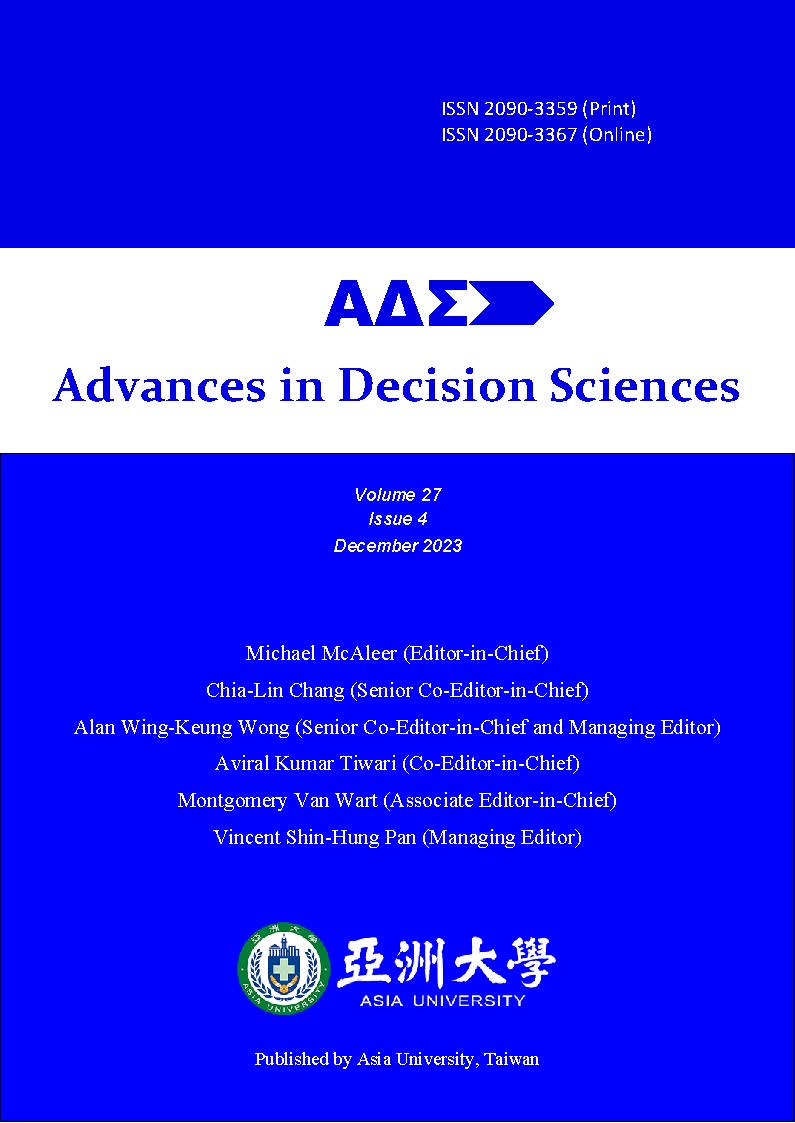Creating Connections Through Characters: A Study of Brand Mascots and Their Influence on Consumer Purchase Intentions
DOI:
https://doi.org/10.47654/v27y2023i4p72-89Keywords:
Brand Mascot, Anthropomorphism, Intention to buy, AttitudeAbstract
Purpose: This study aims to investigate the impact of brand mascots on consumers' attitudes and purchase intentions, emphasizing the significance of emotional connections in the competitive business landscape and deciding on the best strategy to formulate to capture the market chunk.
Design/Methodology/Approach: Employing a hybrid research approach, a sample of 568 respondents was collected within India. SmartPLS was utilized for analysis. The research delves into brand awareness, personification, and self-congruence as determinants of consumer attitudes and intentions.
Findings: The study uncovers positive associations between brand awareness, brand personification, brand self-congruency, attitude towards advertisements, and consumer purchase intentions when a brand mascot is used as an endorsement strategy, particularly in the food sector where brands use brand mascots as a promotional strategy. The integration of brand mascots as tools to establish connections with branding aspects and capture consumer attention is affirmed.
Research Limitations: While providing valuable insights, this research acknowledges its limitations. Future studies should address these limitations by encompassing diverse industries, investigating supplementary factors, and exploring various contexts to deepen understanding of the intricate relationship between brand mascots and consumer behavior.
Practical Implications: This research underscores the functional significance of integrating brand mascots in marketing strategies to foster connections with consumers by adding value to branding aspects such as the usage of brand mascots, creating brand awareness, enhancing brand personality and brand self-congruency, thereby potentially enhancing purchase intentions, especially in branding-sensitive sectors like the food industry.
Social Implications: The study implies that successfully incorporating brand mascots can contribute to stronger brand-consumer relationships by enhancing the branding aspects, potentially leading to positive social implications such as enhanced brand engagement, positive attitude, and affirmativeness towards advertisements and purchase intention.
Originality/Value: By delving into the multifaceted aspects of brand mascots and their influence on enhancing the brand aspects and consumer behavior, this research contributes to the existing body of knowledge. It underscores the originality of considering mascot compatibility crucial to strengthening and creating brand awareness, personification, and self-congruence.
References
Aaker, J. L. (1997). Dimensions of brand personality. Journal of Marketing Research, 34(3), 347–356.
Aggarwal, P., & McGill, A. L. (2012). When brands seem human, do humans act like brands? Automatic behavioral priming effects of brand anthropomorphism. Journal of Consumer Research, 39(2), 307–323.
Agrawal, S., Khandelwal, U., & Bajpai, N. (2021). Anthropomorphism in advertising: the effect of media on audience attitude. Journal of Marketing Communications, 27(8), 799–815.
Aguirre‐Rodriguez, A. (2014). Cultural factors that impact brand personification strategy effectiveness. Psychology & Marketing, 31(1), 70–83.
Ali, F., Rasoolimanesh, S. M., Sarstedt, M., Ringle, C. M., & Ryu, K. (2018). An assessment of the use of partial least squares structural equation modeling (PLS-SEM) in hospitality research. International Journal of Contemporary Hospitality Management, 30(1), 514–538.
BAŞFIRINCI, C., & Cilingir, Z. (2015). Anthropomorphism and advertising effectiveness: Moderating roles of product involvement and the type of consumer need. Journal of Social and Administrative Sciences, 2(3), 108–131.
Bıçakcıoğlu, N., İpek, İ., & Bayraktaroğlu, G. (2018). Antecedents and outcomes of brand love: the mediating role of brand loyalty. Journal of Marketing Communications, 24(8), 863–877.
Callcott, M. F., & Phillips, B. J. (1996). Observations: Elves make good cookies: Creating likable spokes-character advertising. Journal of Advertising Research, 36(5), 73.
Cayla, J. (2013). Brand mascots as organisational totems. Journal of Marketing Management, 29(1–2), 86–104.
Chen, S., & Lin, J. (2018). Brand personification as bonding: A sociosemiotic analysis of three packaging cases. Chinese Semiotic Studies, 14(1), 13–39.
Chin, W. W. (1998). The partial least squares approach to structural equation modeling. Modern Methods for Business Research, 295(2), 295–336.
Çizer, E. Ö. (2023). Someone Like Us: Anthropomorphism in the Consumer Behavior in the Scope of Emerging Countries. In Impact of Disruptive Technologies on the Socio-Economic Development of Emerging Countries (pp. 189–214). IGI Global.
Cohen, J. (2013). Statistical power analysis for the behavioral sciences. Academic press.
Cohen, R. J. (2014). Brand personification: Introduction and overview. Psychology & Marketing, 31(1), 1–30.
Delbaere, M., McQuarrie, E. F., & Phillips, B. J. (2011). Personification in advertising. Journal of Advertising, 40(1), 121–130.
Delgado-Ballester, E., Palazón, M., & Pelaez-Muñoz, J. (2017). This anthropomorphised brand is so loveable: The role of self-brand integration. Spanish Journal of Marketing-ESIC, 21(2), 89–101.
Eisend, M., & Stokburger-Sauer, N. E. (2013). Brand personality: A meta-analytic review of antecedents and consequences. Marketing Letters, 24, 205–216.
Epley, N., Waytz, A., & Cacioppo, J. T. (2007). On seeing human: a three-factor theory of anthropomorphism. Psychological Review, 114(4), 864.
Fetscherin, M., & Heinrich, D. (2014). Consumer brand relationships: A research landscape. In Journal of Brand Management (Vol. 21, pp. 366–371). Springer.
Fournier, S. (1998). Consumers and their brands: Developing relationship theory in consumer research. Journal of Consumer Research, 24(4), 343–373.
Garretson, J. A., & Niedrich, R. W. (2004). Spokes-characters: Creating character trust and positive brand attitudes. Journal of Advertising, 33(2), 25–36.
Grzeskowiak, S., Sirgy, M. J., Foscht, T., & Swoboda, B. (2016). Linking retailing experiences with life satisfaction: The concept of story-type congruity with shopper’s identity. International Journal of Retail & Distribution Management, 44(2), 124–138.
Guido, G., & Peluso, A. M. (2015). Brand anthropomorphism: Conceptualization, measurement, and impact on brand personality and loyalty. Journal of Brand Management, 22, 1–19.
Guthrie, S. E. (1997). Anthropomorphism: A definition and a theory.
Hair, J. F., Risher, J. J., Sarstedt, M., & Ringle, C. M. (2019). When to use and how to report the results of PLS-SEM. European Business Review, 31(1), 2–24.
Hair Jr, J. F., Sarstedt, M., Ringle, C. M., & Gudergan, S. P. (2017). Advanced issues in partial least squares structural equation modeling. saGe publications.
Hogg, M. K. (1998). Anti-constellations: exploring the impact of negation on consumption. Journal of Marketing Management, 14(1–3), 133–158.
Huang, H. H., & Mitchell, V. (2014). The role of imagination and brand personification in brand relationships. Psychology & Marketing, 31(1), 38–47.
Keller, K. L. (2001). Building customer-based brand equity: A blueprint for creating strong brands.
Keller, K. L. (2005). Branding shortcuts: Choosing the right brand elements and leveraging secondary associations will help marketers build brand equity. Marketing Management, 14(5), 18.
Lee, M. S. W., Motion, J., & Conroy, D. (2009). Anti-consumption and brand avoidance. Journal of Business Research, 62(2), 169–180.
May, F., & Monga, A. (2014). When time has a will of its own, the powerless don’t have the will to wait: Anthropomorphism of time can decrease patience. Journal of Consumer Research, 40(5), 924–942.
Mourey, J. A., Olson, J. G., & Yoon, C. (2017). Products as pals: Engaging with anthropomorphic products mitigates the effects of social exclusion. Journal of Consumer Research, 44(2), 414–431.
Murray, K. B., & Häubl, G. (2009). Personalization without interrogation: Towards more effective interactions between consumers and feature-based recommendation agents. Journal of Interactive Marketing, 23(2), 138–146.
Nasr Esfahani, D., Soltanhoseini, M., Rahbari, S., & Shams, H. (2022). Presenting the model of the impact of brand mascot on brand awareness, brand recall, and intention to purchase among sporting goods consumers. Sport Management Journal, 14(1), 285–307.
Neeley, S. M., & Schumann, D. W. (2004). Using animated spokes-characters in advertising to young children: does increasing attention to advertising necessarily lead to product preference? Journal of Advertising, 33(3), 7–23.
Nguyen, T. L. H., Sulistiawan, J., & Ajdari, A. (2022). Trans-purchase intention in transmedia storytelling. Advances in Decision Sciences, 26(2), 1–15.
Park, C. W., & MacInnis, D. J. (2006). What’s in and what’s out: Questions on the boundaries of the attitude construct. Journal of Consumer Research, 33(1), 16–18.
Peirce, K., & McBride, M. (1999). Aunt Jemima isn’t keeping up with the Energizer bunny: Stereotyping of animated spokescharacters in advertising. Sex Roles, 40(11–12), 959–968.
Proctor, D. (2018). Cybernetic Animism: non-human personhood and the internet. In Digital Existence (pp. 227–241). Routledge.
Puzakova, M., Rocereto, J. F., & Kwak, H. (2013). Ads are watching me: A view from the interplay between anthropomorphism and customisation. International Journal of Advertising, 32(4), 513–538.
Reavey, B., Puzakova, M., Larsen Andras, T., & Kwak, H. (2018). The multidimensionality of anthropomorphism in advertising: The moderating roles of cognitive busyness and assertive language. International Journal of Advertising, 37(3), 440–462.
Rehman, V. (2019). Revisiting the fairness paradigm in India: Synthesis of literature and application of the self-concept theory. Society and Business Review, 14(1), 31–42.
Sarkar, A., Sarkar, J. G., & Bhatt, G. (2019). Store love in single brand retailing: the roles of relevant moderators. Marketing Intelligence & Planning, 37(2), 168–181.
Singh, D., Bajpai, N., & Kulshreshtha, K. (2021). Brand experience-brand love relationship for Indian hypermarket brands: The moderating role of customer personality traits. Journal of Relationship Marketing, 20(1), 20–41.
Sivaramakrishnan, S., Wan, F., & Tang, Z. (2007). Giving an “e-human touch” to e-tailing: The moderating roles of static information quantity and consumption motive in the effectiveness of an anthropomorphic information agent. Journal of Interactive Marketing, 21(1), 60–75. https://doi.org/https://doi.org/10.1002/dir.20075
Stafford, M. R., Stafford, T. F., & Day, E. (2002). A contingency approach: The effects of spokesperson type and service type on service advertising perceptions. Journal of Advertising, 31(2), 17–35.
Tek, Ö. B. (2004). Bütünleşik Pazarlama İletişiminde ve Markaların Yerleşiminde Maskotların Rolü ve Önemi. Pazarlama Dünyası, Yıl, 18, 2004.

Published
Issue
Section
License
Copyright (c) 2024 Advances in Decision Sciences

This work is licensed under a Creative Commons Attribution-NonCommercial 4.0 International License.







 Scientific and Business World
Scientific and Business World